
Let's talk!
Fill out this form and we will contact you as soon as possible.
Striking beauty rooted in the heart of the North American desert.
ORDER PLANTS ORDER PLANTSAgave plants are resilient succulents admired for their ornamental applications in various landscape designs. Native to arid regions of the Americas, agave liners thrive in full sun to part shade and are ideal for xeriscaping due to their low water requirements. These plants, often characterized by their rosettes of firm succulent leaves bordered by serrated edges and pointed tips, have become popular focal points in rock gardens and residential landscapes.
With over 200 species in North America, agave young plants are often cultivated in 1 to 3 gallon containers, which allow for easy placement in various landscape settings. While they are well-adapted to survive with minimal water, these plants do show increased growth when provided with regular watering and fertilization in well-draining soil. It is crucial to let the soil dry out completely between waterings to prevent root rot.
An interesting fact about agaves is that, after several years, sometimes as many as 8 to 30, depending on the species, they will produce a tall, spectacular flower stalk. This final act of blooming is both the culmination of the plant's energy and a signal of its lifecycle's end, as the agave will die after flowering. However, in some agave species the plant would often leave behind "pups" or offshoots, ensuring its legacy continues in the garden.
Agave liners are known for their stunning variety in form and color, which can change throughout the year based on light, season, temperature, soil, and hydration.
Check out our catalog to find the hardiness zone of each one and select the right one for your garden!
Our collection includes agave young plants that vary in size and leaf structure, from soft, thornless varieties to those with thick, blade-like leaves adorned with protective thorns along the edges and tips. Due to the growing popularity of agave liners, we continually expand our selection to offer a diverse range of species.
For a closer look at our offerings, download our agave catalog. If you're searching for a specific species that you can't find, or if you have special requests, feel free to call us, we're here to help you find the perfect agave liner for your needs.
Do you want to learn more about our production process? We invite you to download our complete operating protocol.
DOWNLOAD AGAVE PROTOCOLMGN Liners tissue culture technology offers a modern, efficient, and reliable method for propagating agave young plants, ensuring consistent quality and health across every agave liner. Unlike traditional propagation methods like seed germination or offsets, tissue culture delivers superior results in terms of plant uniformity, disease resistance, and production efficiency.
Tissue culture ensures that all agave liners are sterile and free from pathogens, pests, and diseases.
Prevents the spread of issues like bacterial rot or fungal infections, which can devastate crops
propagated by traditional means.
Every agave liner produced through tissue culture is a genetic clone of the parent plant, ensuring
uniformity in growth, size, and form.
Ideal for large-scale commercial operations that require consistency in appearance and performance.
Traditional propagation methods, such as relying on offsets or seeds, can be slow and unpredictable.
Tissue culture accelerates the production process, enabling the cultivation of thousands of identical
agave liners in a fraction of the time.
By choosing MGN Liners tissue-cultured agaves, you can enjoy higher yields, reduced risks, and the assurance of a sustainable, high-quality crop.
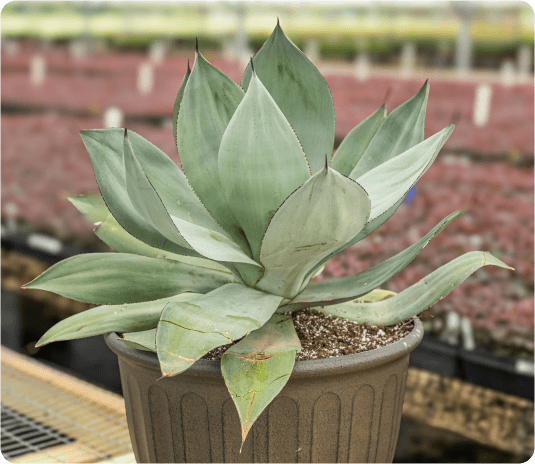
Pests

This is one of the most serious pests for agaves. The adult weevil lays eggs at the base of the plant, and when the larvae hatch, they bore into the plant, causing it to collapse and rot.

These small pests can infest agave leaves, appearing as tiny, often white or brown, bumps on the surface.

These pests appear as white, cottony masses on agave leaves and can weaken the plant by sucking sap.
Diseases

This is typically caused by overwatering or poor drainage, leading to fungal infections.

This fungal disease can cause brown or black spots on the leaves, which may eventually lead to leaf dieback.
Environmental stressors

Agaves are generally sun-loving plants, but intense, direct sunlight in very hot climates can cause sunburn.

Agaves are sensitive to cold, particularly frost, which can damage their leaves.

While agaves are drought-tolerant, prolonged periods without water can stress the plant.
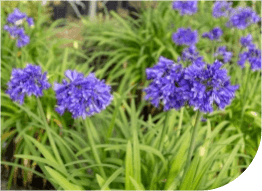
Agapanthus nursery plant liners feature vibrant blue or white blooms and lush, strap-like leaves.
VIEW MORE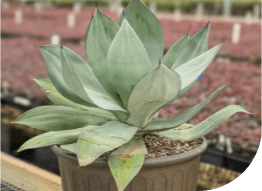
Agave nursery plant liners boast bold, sculptural leaves, making them a stunning, low-maintenance choice for xeriscaping.
VIEW MORE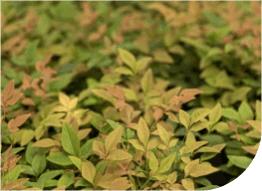
Aloe nursery plant liners are loved for their rosette form and medicinal, fleshy leaves.
VIEW MORE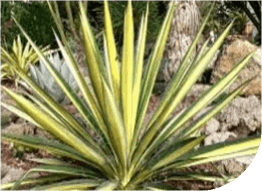
Alpinia nursery plant liners stand out with tropical foliage and vibrant flowers, ideal for shaded gardens.
VIEW MORE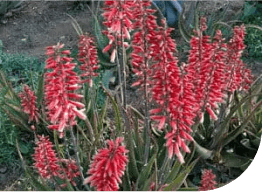
Aloe nursery plant liners are loved for their rosette form and medicinal, fleshy leaves.
VIEW MORE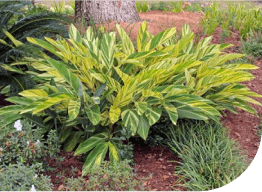
Alpinia nursery plant liners stand out with tropical foliage and vibrant flowers, ideal for shaded gardens.
VIEW MORE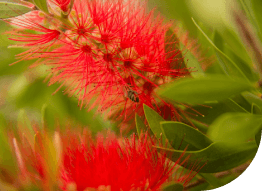
Callistemon nursery plant liners feature unique red blooms that are loved by pollinators.
VIEW MORE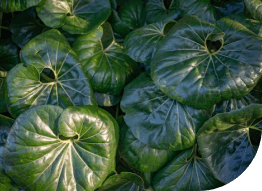
Farfugium nursery plant liners add charm with glossy, round leaves and bright yellow flowers.
VIEW MORE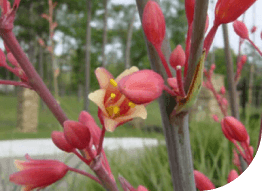
Hesperaloe nursery plant liners boast arching leaves and tall, striking red or pink flower spikes.
VIEW MORE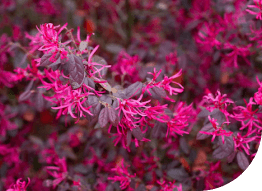
Loropetalum nursery plant liners showcase deep-purple foliage and delicate, pink, fringed flowers.
VIEW MORENo, agave and aloe vera are entirely different plant species, although they are often confused due to their similar appearance. Agaves belong to the Asparagaceae family, while aloe vera is part of the Asphodelaceae family. They are not in the same genus, but both are admired for their drought tolerance and striking foliage.
Agave is a succulent because it stores water in its fleshy leaves, which helps it survive arid conditions. Unlike cacti, agaves have distinct leaves rather than spines, setting them apart from true cacti species.
Agave plants are long-lived, with some species surviving up to 100 years. However, most agaves have lifespans ranging between 10 and 30 years, depending on the species and growing conditions.
Agave plants do not regrow from their main rosette after it has been cut or after the plant blooms (as they are monocarpic). However, they often produce "pups" or offsets at the base, which can be replanted to propagate new plants.
Yes, agaves can thrive in containers, provided the pot has good drainage and the soil is well-aerated. Potted agaves may require more frequent watering than those planted in the ground, as container soil dries out faster.
Agaves are sun-loving plants, but they can get sunburned if exposed to intense, direct sunlight for prolonged periods, especially in very hot climates. Gradually acclimating them to full sun and providing some shade during peak hours can prevent scorching.
Agaves are monocarpic, meaning they bloom only once in their lifetime. Blooming typically occurs between 10 and 30 years, depending on the species. After blooming, the main rosette dies, but offsets often ensure the plant’s continuity.
For over 46 years, Magnolia Gardens Tissue Culture Division has been dedicated to delivering top-quality young plants, pioneering protocol development, and efficient stock management services to breeders, growers, and brokers alike. We take pride in customizing our services to meet the unique needs of each client with a win-win mindset.
MGN Liners is a division of Magnolia Gardens Nursery.
+46 years
Almost half century of experience in the green industry
+9M
More than 9 million plants produced per year in our Tissue Culture laboratory
+4.5M
More than 4.5 million plants produced per year in our greenhouse
95%
of the production comes from our laboratory in Texas